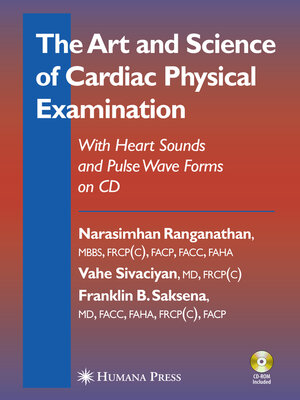The Art and Science of Cardiac Physical Examination
ebook ∣ With Heart Sounds and Pulse Wave Forms on CD · Contemporary Cardiology
By Narasimhan Ranganathan

Sign up to save your library
With an OverDrive account, you can save your favorite libraries for at-a-glance information about availability. Find out more about OverDrive accounts.
Find this title in Libby, the library reading app by OverDrive.



Search for a digital library with this title
Title found at these libraries:
| Library Name | Distance |
|---|---|
| Loading... |
It has been our experience that instruction in physical examination of the heart in medical schools has been deteriorating since the advent of such modern diagnostic tools as two-dimensional echocardiography and nuclear imaging. At best, the teaching has been sketchy and too superficial for the student to appreciate the pathophysiological correlates. Both invasive and the noninvasive modern technologies have contributed substantially to our knowledge and understanding of cardiac physical signs and their pathophysiological correlates. However, both students and teachers alike appear to be mesmerized by technological advances to the neglect of the age-old art, as well as the substantial body of science, of cardiac physical examination. It is also sad to see reputed journals give low priority to articles related to the clinical examination. Our experience is substantiated by a nationwide survey of internal medicine and cardiology training programs, which concluded that the teaching and practice of cardiac auscultation received low emphasis, and perhaps other bedside diagnostic skills as well (1). The state of the problem is well reflected in the concerns expressed in previous publications (2–4), including the 2001 editorial in the American Journal of Medicine (Vol. 110, pp. 233–235), entitled "Cardiac auscultation and teaching rounds: how can cardiac auscultation be resuscitated?", as well as in the rebuttal, "Selections from current literature. Horton hears a Who but no murmurs—does it matter?" (5).







